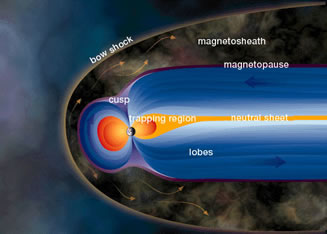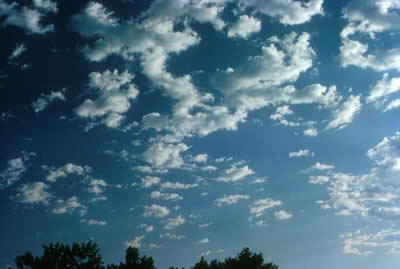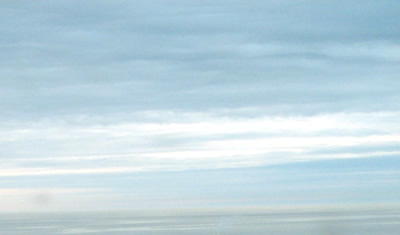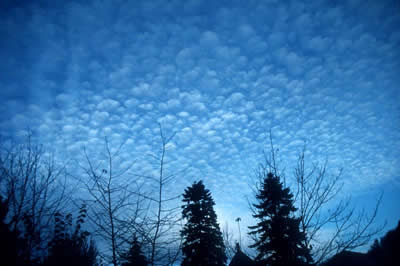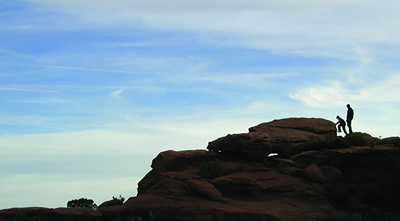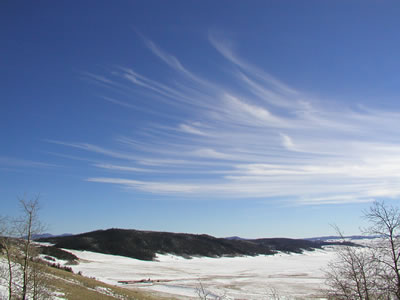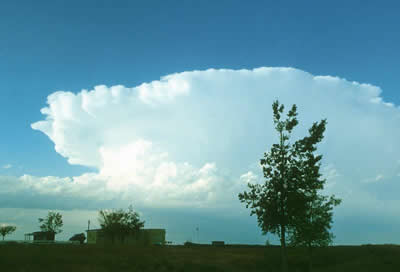Charged Particle Motion in Earth's Magnetosphere
Magnetic Mirroring and the Loss Cone
A particle's pitch angle increases as it moves into a region of stronger magnetic field and decreases as it moves into a region of weaker field.
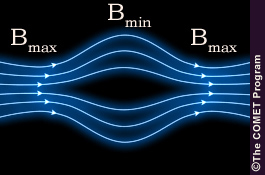
In a simple magnetic mirror geometry the magnetic field reaches a minimum value at the center of the geometry and a maximum value at the end. Particles within such a geometry can follow a range of trajectories, as described below.
stuck in the centerA particle with pitch angle |
straight and narrowOn the other hand, a particle with pitch angle |
trapped in the mirrorIn a magnetic mirror geometry, particles with pitch angles in the following range are trapped within the magnetic mirror:
|
into the loss coneHowever, particles with |



